Chameleon People - [14]
She stopped and looked at me with teasing eyes, but hurried on obediently when I asked if she could remember what it was her father had doubted. It crossed my mind that we had hit it off remarkably well, despite being so different.
‘Yes, but unfortunately, he was more secretive about that. The strangest thing was the key, he said. The door to the hotel room was locked, but the key was lying on the floor out in the corridor. And apparently the woman only suffered from petit mal. But there were a few other things that were odd about the whole affair. Father, who was otherwise not prone to being abstract, became remarkably vague when he talked about it. It could as easily be suicide or murder, as epilepsy, he said.’
The story had piqued my interest now. I hastened to ask if she knew who else had been there.
‘Apart from my father and the young Eva Bjølhaugen, her boyfriend and sister were there. There was also the young woman whom Father was engaged to at the time, and another friend. So there were three young men and three young women, two couples and one set of siblings. Plenty of opportunity for romance and jealousy there, I reckon. From what I understood, Father and his fiancée broke up soon afterwards.’
‘How strange that there was no autopsy,’ I said.
She nodded eagerly. ‘That is what I thought. Father simply said that there was no autopsy.’
‘And the restaurant visits – where do they fit in?’
Just then, the phone on my desk started to ring. I hoped that it might be information about the suspect’s identity, and answered immediately. I was becoming so focused on the case that it was almost a disappointment to hear Miriam’s voice at the other end.
‘Hi. I just wondered if half past four was still a realistic time to meet, or if we should make it later? I’m sure you’re having a busy day, and I should probably study a little more to prepare for the exam,’ she said.
Miriam still had two and a half months left until the exam. However, her ambitious perfectionism meant that she pretended to have only two weeks left when, in fact, there were two months, and that she only had two days left when it was actually two weeks. I saw no reason to discuss this here and now, and was without a doubt having a busy day. So I gave it five seconds’ thought and suggested that we meet at the Theatre Cafe for supper at half past six.
‘Deal,’ she said, and put the phone down.
‘Apologies, I had to arrange supper with my fiancée,’ I said.
To my disappointment, I saw no disappointment in Ane Line’s eyes, only greater curiosity. She opened her mouth to say something, almost certainly to ask about my fiancée, but I just managed to pip her to the post.
‘Now, where were we? Yes, the meals that the group from 1932 had are more relevant to the case than my own dinner plans.’
‘Yes, they really are quite something, which only underlines how serious the situation was. The other five from the group who were in Oslo in 1932 continued to meet every five years to mark the day that Eva Bjølhaugen died, at the restaurant of the same hotel. They all hoped that someone might say something that would throw light on the tragedy, Father said, but that never happened.’
‘But, if they met every five years and that was in March 1932…’
Ane Line nodded eagerly again. ‘The date was the fifth of March 1932. So the five last met just a couple of weeks ago. It is rather odd, isn’t it?’
She looked up at me from under her red fringe with bright enthusiastic eyes. I nodded with equal enthusiasm. I still could not see any connection between the forty-year-old mystery and the stabbing of Per Johan Fredriksen on a street in Oslo yesterday. My gut feeling told me that there was some kind of link, but my head could not work out what.
‘Very interesting. I will see what I can find about the case in our archives. Do you know if your father had any contact with the four others from 1932 in between these restaurant visits?’
Ane Line smiled again. ‘Well, I know that he certainly had regular contact with one of them. I don’t even know the names of the other three, so I couldn’t say whether he had contact with them or not. But if you find their names in the archives, I’d be more than happy to answer that.’
Ane Line Fredriksen was clearly more curious than most. And her eagerness and openness were contagious. I picked up my pen to write down the name of the one person that her father had had regular contact with. And then promptly dropped it in shock when the redhead exclaimed: ‘Oda Fredriksen! Eva Bjølhaugen was my mother’s little sister.’
We sat and stared at each other for a few seconds. It seemed to me that she was almost teasing me, and enjoying it, despite her father’s death and the gravity of the situation.
‘So let me get this straight: three young men and three young women went to Oslo together in 1932. The young Eva Bjølhaugen, who was the girlfriend of one of the men, was found dead in her locked hotel room in circumstances that have never been clarified. Your father was engaged to one of the other women, but later married Eva Bjølhaugen’s sister?’
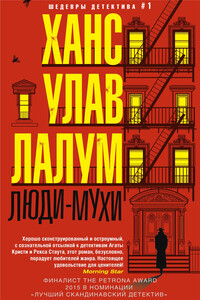
Убит бывший лидер норвежского Сопротивления и бывший член кабинета министров Харальд Олесен. Его тело обнаружено в запертой квартире, следов взлома нет, орудие убийства отсутствует. На звук выстрела к двери Олесена сбежались все соседи, но никого не увидели. Инспектор уголовного розыска Колбьёрн Кристиансен считает, что убийство, скорее всего, совершил кто-то из них. Более того, он полагает, что их показания лживы.
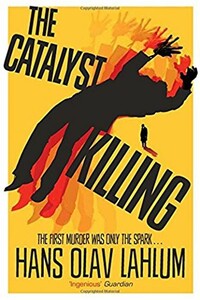
The third mystery in the hugely compelling, bestselling international crime series from Norway's answer to Agatha Christie, Hans Olav Lahlum, The Catalyst Killing will have you guessing to the final clue. The first murder was only the spark… 1970: Inspector Kolbjorn Kristiansen, known as K2, witnesses a young woman desperately trying to board a train only to have the doors close before her face. The next time he sees her, she is dead… As K2 investigates, with the help of his precocious young assistant Patricia, he discovers that the story behind Marie Morgenstierne's murder really began two years ago, when a group of politically active young people set out on a walking tour in the mountains.
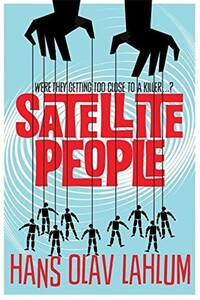
A gripping, evocative, and ingenious mystery which pays homage to Agatha Christie, Satellite People is the second Norwegian mystery in Hans Olav Lahlum's series. Oslo, 1969: When a wealthy man collapses and dies during a dinner party, Norwegian Police Inspector Kolbjorn Kristiansen, known as K2, is left shaken. For the victim, Magdalon Schelderup, a multimillionaire businessman and former resistance fighter, had contacted him only the day before, fearing for his life. It soon becomes clear that every one of Schelderup's 10 dinner guests is a suspect in the case.
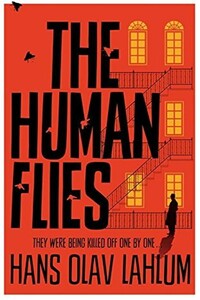
Oslo, 1968: ambitious young detective Inspector Kolbjorn Kristiansen is called to an apartment block, where a man has been found murdered. The victim, Harald Olesen, was a legendary hero of the Resistance during the Nazi occupation, and at first it is difficult to imagine who could have wanted him dead. But as Detective Inspector Kolbjorn Kristiansen (known as K2) begins to investigate, it seems clear that the murderer could only be one of Olesen's fellow tenants in the building. Soon, with the help of Patricia – a brilliant young woman confined to a wheelchair following a terrible accident – K2 will begin to untangle the web of lies surrounding Olesen's neighbors; each of whom, it seems, had their own reasons for wanting Olesen dead.
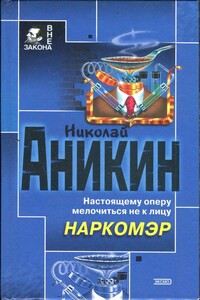
Тупик. Стена. Старый кирпич, обрывки паутины. А присмотреться — вроде следы вокруг. Может, отхожее место здесь, в глухом углу? Так нет, все чисто. Кто же сюда наведывается и зачем? И что охраняет тут охрана? Да вот эту стену и охраняет. Она, как выяснилось, с секретом: время от времени отъезжает в сторону. За ней цех. А в цеху производят под видом лекарства дурь. Полковник Кожемякин все это выведал. Но надо проникнуть внутрь и схватить за руку отравителей, наживающихся на здоровье собственного народа. А это будет потруднее…
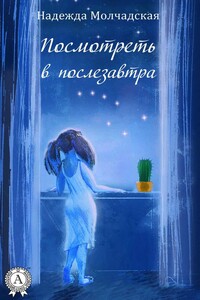
«Посмотреть в послезавтра» – остросюжетный роман-триллер Надежды Молчадской, главная изюминка которого – атмосфера таинственности и нарастающая интрига.Девушка по имени Венера впадает в кому при загадочных обстоятельствах. Спецслужбы переправляют ее из закрытого городка Нигдельск в Москву в спецклинику, где известный ученый пытается понять, что явилось причиной ее состояния. Его исследования приводят к неожиданным результатам: он обнаруживает, что их связывает тайна из его прошлого.
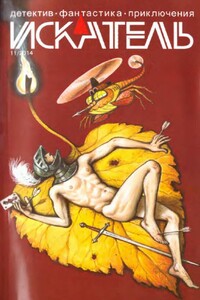
«ИСКАТЕЛЬ» — советский и российский литературный альманах. Издаётся с 1961 года. Публикует фантастические, приключенческие, детективные, военно-патриотические произведения, научно-популярные очерки и статьи. В 1961–1996 годах — литературное приложение к журналу «Вокруг света», с 1996 года — независимое издание.В 1961–1996 годах выходил шесть раз в год, в 1997–2002 годах — ежемесячно; с 2003 года выходит непериодически.Содержание:Анатолий Королев ПОЛИЦЕЙСКИЙ (повесть)Олег Быстров УКРАДИ МОЮ ЖИЗНЬ (окончание) (повесть)Владимир Лебедев ГОСТИ ИЗ НИОТКУДА.
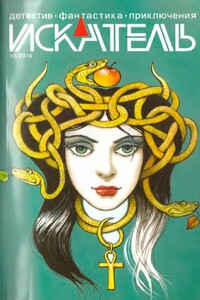
«ИСКАТЕЛЬ» — советский и российский литературный альманах. Издается с 1961 года. Публикует фантастические, приключенческие, детективные, военно-патриотические произведения, научно-популярные очерки и статьи. В 1961–1996 годах — литературное приложение к журналу «Вокруг света», с 1996 года — независимое издание.В 1961–1996 годах выходил шесть раз в год, в 1997–2002 годах — ежемесячно; с 2003 года выходит непериодически.Содержание:Олег Быстров УКРАДИ МОЮ ЖИЗНЬ (повесть);Петр Любестовский КЛЕТКА ДЛЯ НУТРИИ (повесть)
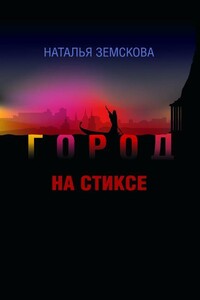
Наталья Земскова — журналист, театральный критик. В 2010 г. в издательстве «Астрель» (Санкт-Петербург) вышел её роман «Детородный возраст», который выдержал несколько переизданий. Остросюжетный роман «Город на Стиксе» — вторая книга писательницы. Молодая героиня, мечтает выйти замуж и уехать из забитого новостройками областного центра. Но вот у неё на глазах оживают тайны и легенды большого губернского города в центре России, судьбы талантливых людей, живущих рядом с нею. Роман «Город на Стиксе» — о выборе художника — провинция или столица? О том, чем рано или поздно приходится расплачиваться современному человеку, не верящему ни в Бога, ни в черта, а только в свой дар — за каждый неверный шаг.
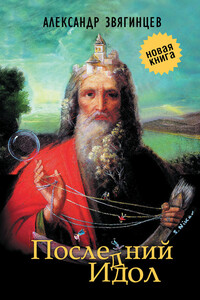
В сборник «Последний идол» вошли произведения Александра Звягинцева разных лет и разных жанров. Они объединены общей темой исторической памяти и личной ответственности человека в схватке со злом, которое порой предстает в самых неожиданных обличиях. Публикуются рассказы из циклов о делах следователей Багринцева и Северина, прокуроров Ольгина и Шип — уже известных читателям по сборнику Звягинцева «Кто-то из вас должен умереть!» (2012). Впервые увидит свет пьеса «Последний идол», а также цикл очерков писателя о событиях вокруг значительных фигур общественной и политической жизни России XIX–XX веков — от Петра Столыпина до Солженицына, от Александра Керенского до Льва Шейнина.